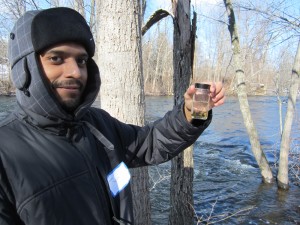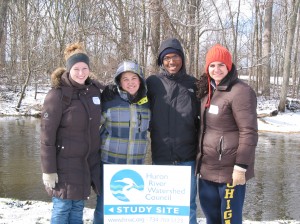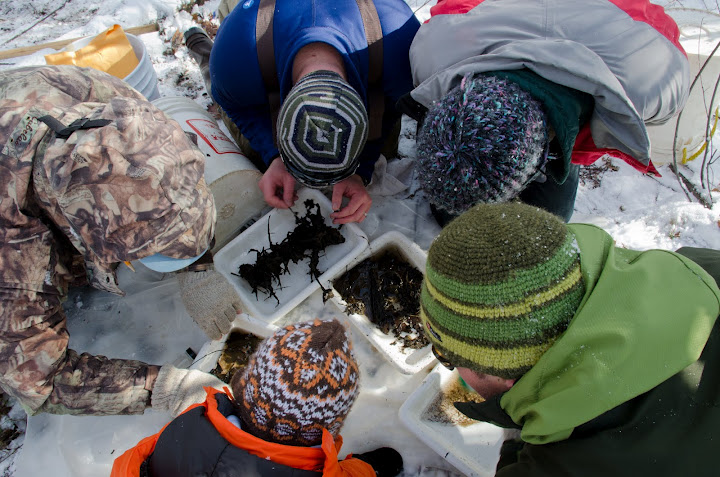
150 volunteers spread thoughout the Huron River watershed in search of stoneflies.
This past weekend, HRWC volunteers braved the high water from unseasonable snowmelt and rain in order to monitor the populations of the aquatic winter stonefly.
Stoneflies are only found in streams and rivers that are free from pollution, so HRWC tracks these critters to understand how our streams are changing over time.
The data is now in and available here. There are a few interesting stories that can be told from this year’s results.
1. This program is held in January because two stonefly families crawl out of rivers and streams and become terrestrial adults by late winter and early spring, and at that point they would be difficult to find. However, this year our team at Mill Creek: Shield Road found a large number of stoneflies that had already emerged and were warming themselves in the sun. This is a very early emergence and is connected to the warm temperatures that we are experiencing this winter.
2. Congratulations to the Wood’s Creek Friends! This is the first year (after sampling for 4 years) that a stonefly was found at the Renton Road site.
3. Mann Creek (east of Brighton) continues to be the best creek in the watershed for stoneflies. This is now the sixth year in a row where volunteers have found four stonefly families. In way of comparison, most of our healthy creeks only have one or two stonefly families.

4. The team that went to Pettibone Creek at Livingston Road thought that they had struck out, but upon examining their sample closely we realized that they had found a Nemourid broadback- also known as a little brown stonefly to the anglers out there. This is the first Stonefly Search in which a team found a stonefly at this site. While not rare statewide, Nemourid broadbacks are rare for the Huron River Watershed. During the Winter Stonefly Search, they are only found at one other site that we monitor. Both Pettibone Creek and this other site (Narrow Gauge Creek) have very high amounts of groundwater inputs. It is unclear if that is a spurious correlation or a legitimate reason for why the insect is found at these locations.
5. Monitoring results on the main branch of Davis Creek have indicated that the insect populations in this creek are declining. We are not finding the diversity or abundance of stoneflies that were found 10 years ago at both Pontiac Trail and Doane Road. The fall and spring monitoring of the full insect community also show a similar pattern. The results seem quite clear: the water quality of Davis Creek is declining slowly but consistently. HRWC is planning on exploring Davis Creek more this coming summer. If interested in joining a team to walk portions of Davis Creek, please contact Paul Steen (psteen@hrwc.org).
To all our volunteers: Thank you again! You made this valuable event possible.




